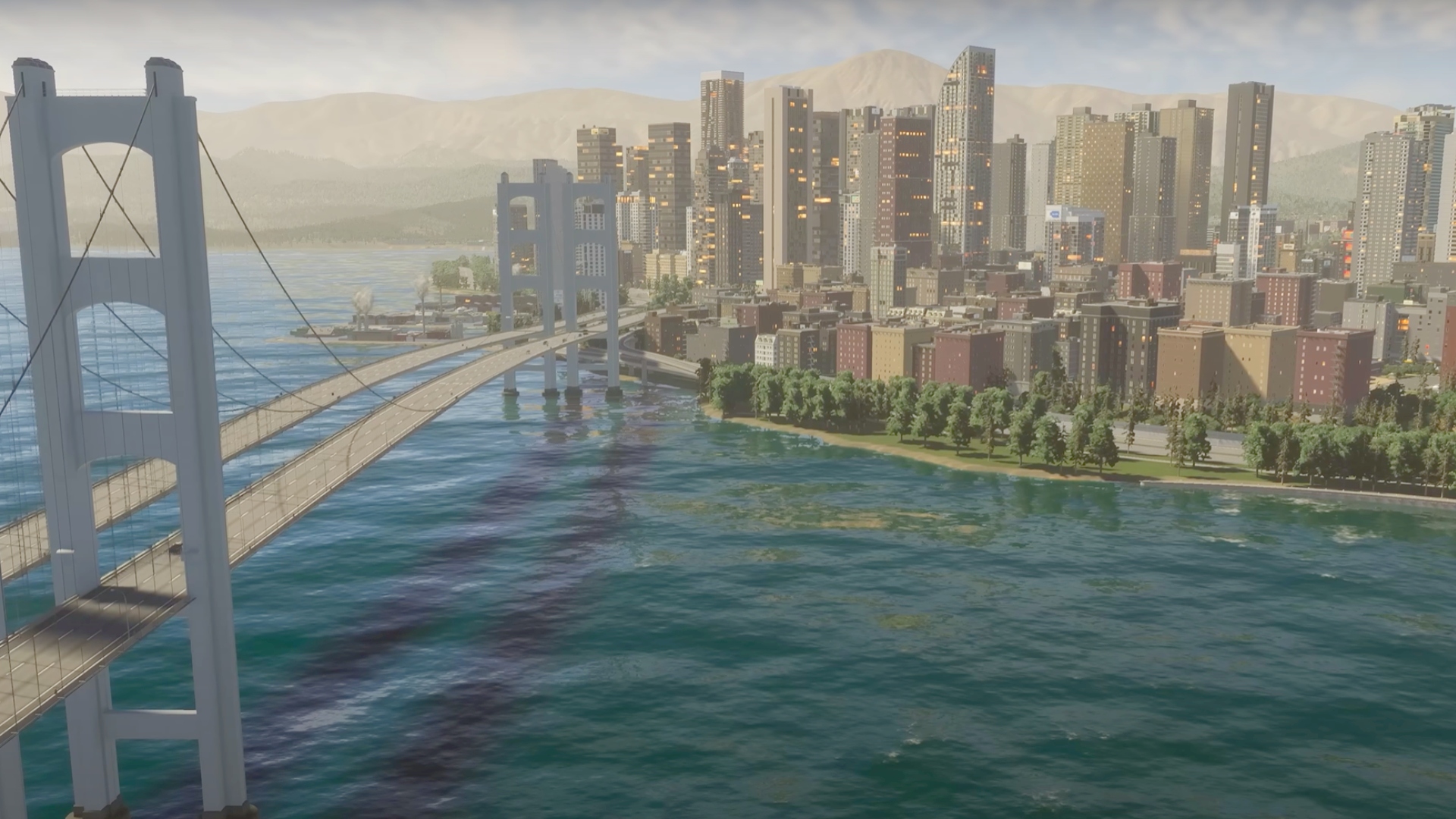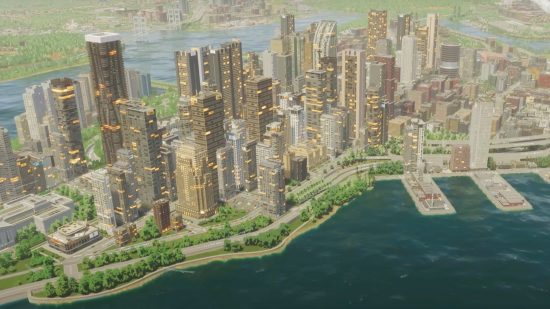Cities Skylines 2’s season and weather systems provide a much more in-depth simulation of time and climate than the original city-building game. In the first Cities Skylines, though the night would turn to day and you could get rain and disasters, the map fell short of a dynamic simulation. Now, with the Cities Skylines 2 release date on its way, Colossal Order offers a huge insight into how the geological world of CS2 is changing to become much more realistic. There are some confusing elements to Cities Skylines 2 weather and seasons, but for the most part, they seem very welcome indeed.
So, we know about the Cities Skylines 2 map and also plenty of details on Cities Skylines 2 services. But Colossal Order just shared new details on how both of these elements, and more, will come together. First of all, the maps will now be based on real-world locations, meaning that their climate and weather will vary. Some will be hot, some will be cold, some will be dry, some will be rainy – it sounds incidental, but actually it can have a big impact on your economy.
If, for example, your city is built somewhere that’s typically warm, places like parks and resorts will often be full to the brim, providing a big boost to happiness and certain types of commerce. When the rain and cold sets in, however, you will see an upturn in other commercial areas like restaurants and cinemas, as your Cims retreat indoors.

It makes simple sense – build lots of outdoor entertainment if you’re somewhere hot, and more indoor amenities if the weather is typically bad – but it’s yet another layer in Cities Skylines 2’s more in-depth simulation.
Weather will also impact services. If it’s really hot, people will fire up air conditioners, setting your electricity usage through the ceiling. Likewise, if it’s cold, everyone will be using heaters, putting another strain on your energy output. In colder seasons, you need to commit more funds to road maintenance and emergency services. There are also, according to Colossal Order, two types of natural disasters.
“Your city might experience disasters with a lowercase ‘d’’,” the developer says. “That’s when disasters cause traffic accidents that clog road networks. Disasters with a capital ‘D’ are a whole lot more serious. They impact city services and the local economy in the short and long term.”

This follows after it was seemingly confirmed that natural disasters will form part of the Cities Skylines 2 base game. Seasons and the passing of time in CS2, however, require a bit more explanation.
So, the weather and the climate change between spring, summer, fall, and winter in Cities Skylines 2, with each season offering new challenges and problems to manage. As you play, just like in Cities Skylines, day will gradually give way to night. But this is where it gets a little more involved.
When day turns to night and back again, that represents, in Cities Skylines 2 terms, one in-game month, or cycle. Once you’ve gone through three cycles – that is, three full transitions between day and night – that represents a season.
And then, once you’ve completed four seasons, the whole process starts over. So, one day and night cycle represents a month. Three months represent a season. Four seasons represent a year. Put more simply, a year is twelve complete day and night cycles. Easy, right?!
Check out the full Cities Skylines 2 system requirements, so you’re absolutely ready ahead of launch day. You might also want to try some of the other best management games on PC.
